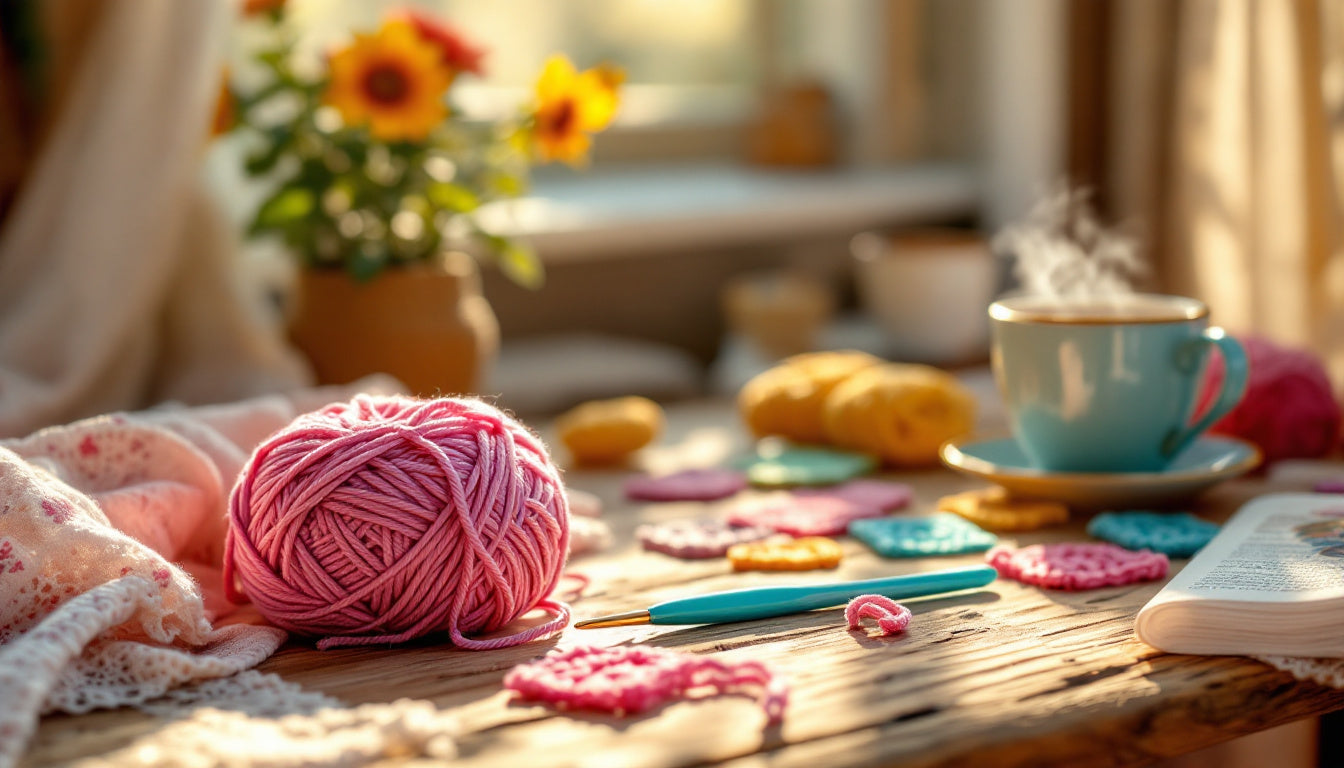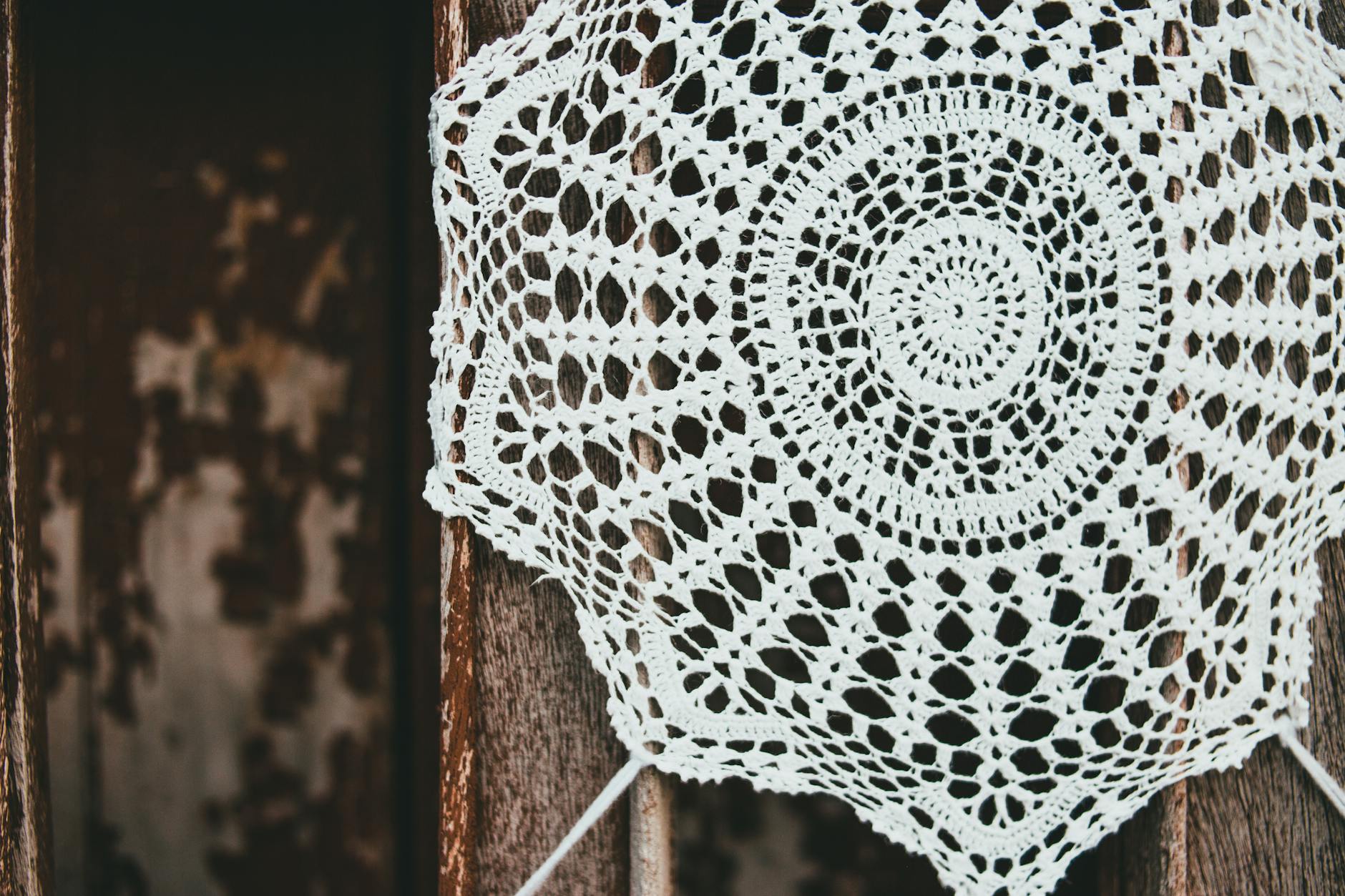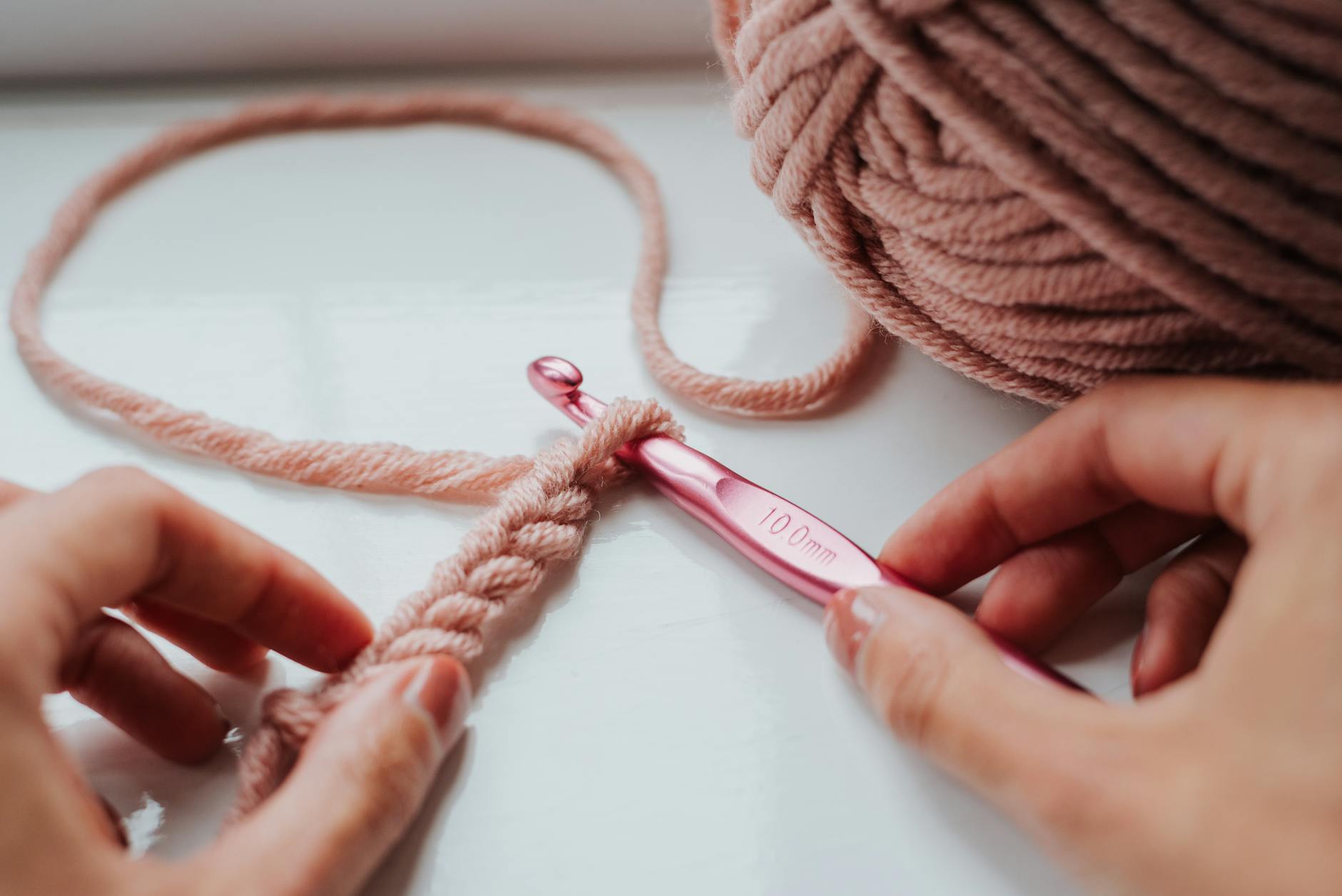
Crochet Stitches That Save the Most Yarn: Top Picks!
Crocheters know how quickly yarn can disappear during projects, which is why yarn efficiency matters so much. Whether you’re working on a budget or trying to avoid leftover scraps piling up, knowing which crochet stitches use the least yarn can make a big difference. Short answer? Stitches like the single crochet are often the most efficient, but there’s more to it than just picking a stitch. I'll guide you through the options to help make your projects more manageable and cost-effective.
Understanding Yarn Usage in Crochet Stitches
Yarn usage can make or break a crochet project, especially if you're working with a limited supply or an expensive type of yarn. While you might think it’s just about the stitch, factors like tension, yarn weight, and even hook size play a major role. Let’s dive deeper to understand how these come together to determine yarn efficiency.
How Yarn Usage is Measured in Crochet
Understanding how much yarn a stitch consumes isn’t just guesswork. Crocheters have a few reliable methods to figure this out. For instance, one way is to calculate yardage per stitch by making a small test piece in the desired stitch. You can also weigh your project before and after to estimate the yarn used for that specific design.
Some tips include:
- Making a test swatch using the stitch and yarn combination you plan for your project. This simplifies calculations.
- Using scales to measure yarn weight differences after producing a given number of stitches.
For a detailed guide on calculating your project's yardage, you can check this excellent resource: How to Figure Out Yarn Yardage.
Factors Influencing Yarn Usage
Did you know that a taller stitch like a double crochet typically uses more yarn than a shorter one like a single crochet? Several factors play into this dynamic:
- Stitch Height: Taller stitches (e.g., treble crochet) use more yarn because they require longer loops.
- Yarn Weight: Heavier yarns consume more overall yardage simply due to their bulk.
- Hook Size: Larger hooks produce looser stitches, which can either save or use more yarn depending on your tension.
- Tension/Gauge: Your personal tension dramatically impacts yarn usage. A tighter stitch usually requires more yarn because it compacts the design.
Curious how crochet compares to other crafts in terms of yarn usage? Dive deeper with Which Craft Uses More Yarn: Crochet or Knitting?.

Photo by Mary Michaelyne
Importance of Choosing Yarn-Efficient Stitches
When you're working on something big, like a crochet blanket, using yarn-efficient stitches can be a lifesaver. These stitches not only help stretch your yarn supply but also keep your project lightweight. It’s especially useful when working with premium or hand-dyed yarns, where every yard matters.
Yarn-efficient stitches:
- Make large projects more affordable.
- Allow you to get the most out of smaller skeins.
- Help maintain a project’s intended softness and drape without it becoming too heavy.
If you’re a beginner and looking to learn more about stitch basics, start with Learn How to Crochet.
Making smart choices about stitches and tools can turn your project into a masterpiece while staying on budget.
Top Yarn-Efficient Crochet Stitches
Choosing the right stitch can make your crochet projects more economical and efficient. Certain stitches stand out when it comes to saving yarn without compromising on the overall look and feel. Here’s a breakdown of some of the best yarn-efficient stitches to consider:
Slip Stitch
The slip stitch is one of the simplest and most efficient stitches; it barely adds any height to your work, making it ideal for situations where minimizing yarn is crucial. Its compact nature means it uses the least amount of yarn compared to taller or more textured stitches. While slip stitches are typically used to join rounds or edges, they’re also great for creating smooth, lightweight fabrics.
If you're new to slip stitches or need a refresher, check out this easy guide to crochet a slip stitch.

Photo by Castorly Stock
Single Crochet Stitch
The single crochet stitch is a staple for many projects due to its durability and versatility. Though it uses slightly more yarn than a slip stitch, it’s still one of the most yarn-efficient stitches available. This stitch creates a dense fabric that’s perfect for items like washcloths, bags, or even structured garments.
When compared to taller stitches like double or treble crochets, the single crochet stitch can help you stretch your yarn further — perfect for budget-conscious projects or when working with expensive yarn.
For ideas on projects where this stitch shines, explore the Secret Yarnery’s guide to crochet stitches for blankets.
Extended Single Crochet
If you’re looking for a stitch that compromises slightly on height without a significant increase in yarn usage, consider the extended single crochet. This variation adds an extra chain to the traditional single crochet, resulting in a slightly looser stitch. It’s ideal for creating lightweight fabrics with better drape, perfect for shawls and scarves.
What sets the extended single crochet apart is that it provides a bit more height and stretch while still being relatively economical with yarn. It’s often a great choice for projects where you want a balance between durability and style.
Mesh Stitches
Mesh stitches, which incorporate techniques like chain spaces, are a clever way to save yarn and create openwork designs. By combining foundational crochet stitches with chains, these patterns reduce yarn usage while adding texture and breathability. For example:
- Chain mesh is a simple, lightweight choice for lacy projects.
- Filet crochet alternates filled and open blocks, making it both stylish and yarn-efficient.
Mesh stitches are especially popular for summer garments and home décor pieces where airiness and elegance take center stage.
For more on creating stunning crochet textures, consider exploring advanced crochet textures and designs.
Tunisian Crochet Techniques
Tunisian crochet stitches, particularly the Tunisian simple stitch, are a hidden gem for yarn-saving. This technique uses long loops worked onto a single hook and can be surprisingly efficient, despite the textured look it provides. Tunisian crochet is an excellent option for those who want a fabric-like finish reminiscent of knitting.
Although some complex Tunisian stitches can consume more yarn, beginner-friendly options like the simple stitch or Tunisian knit stitch are great for conserving yardage and creating unique textures.
If you’ve never tried Tunisian crochet, now could be the perfect time to expand your skill set while saving yarn.
The right crochet stitch isn’t just about aesthetics; it's about functionality, too! By exploring these yarn-efficient options, you'll find stitches that can take your projects further while keeping your supplies in check. The next time you pick up your hook, give one of these techniques a try!

Comparing Yarn-Efficient Stitches to Common Alternatives
When you're planning a crochet project, selecting the right stitch is crucial. Some stitches can devour yarn like nobody's business, while others let your skein go the extra mile. Let’s break it down so you can make informed choices and save on those precious yards of yarn.
Yarn-Intensive Stitches to Avoid
When you're aiming for yarn efficiency, certain stitches are better left off your list. Here are some of the more extravagant stitches that tend to drain your yarn supply quickly:
- Puff Stitch: This stitch creates a lovely, puffy texture, but it uses multiple yarn-overs and pull-throughs for each puff, which adds up fast. It's great for creating texture but should be avoided if you’re trying to save yarn.
- Cluster Stitch: Similar to puff stitches, clusters require multiple incomplete stitches to be wrapped together into one, meaning more yarn consumption.
- Bobble Stitch: A relative of the puff and cluster stitches, bobble stitches require even more layers of loops, leading to higher yarn usage.
These stitches are excellent for adding visual interest to projects like blankets or decorations but can quickly burn through your yarn reserves.
For more tips on balancing creative designs with yarn-saving strategies, explore the blog post on yarn craft hacks.

Photo by Erik Mclean
Case Study: Same Project, Different Stitches
To see just how much your stitch selection impacts yarn use, let’s consider a simple example. Imagine crocheting a square of equal size using various stitches:
- Single Crochet: This stitch produces a dense and robust fabric. While it's yarn-efficient, the compact nature means you might use slightly more yardage than slip stitches.
- Double Crochet: Taller stitches like double crochet require more loops and yarn per stitch, so you'll notice increased yarn usage.
- Puff Stitch or Bobble Stitch: Add texture but at the expense of a lot more yarn. A square made entirely with puff stitches could use nearly double the yarn compared to one made with single crochet.
The difference becomes especially evident when working on larger projects like blankets or shawls. If you want to keep your project lightweight and cost-effective, you might stick to simpler stitches like single crochet or slip stitch.
For a detailed look at how different stitches affect yarn consumption, check out this helpful guide on what crochet stitch takes the most yarn.
Choosing your crochet stitch wisely isn’t just about aesthetics; it's a strategic choice that can save yarn, money, and time. Whether you're after intricate designs or aiming to stretch your supplies, knowing which stitches to avoid—and which to embrace—lets your crochet work shine efficiently.
Tips to Maximize Yarn Efficiency in Crochet
Finding ways to make your yarn go further isn't just about saving money—it’s also about reducing waste and getting the most out of every skein. Whether you're tackling a large-scale blanket or a quick, afternoon scarf, a little planning can go a long way to stretching your resources.
Adjusting Hook Size
Did you know that your hook size can drastically affect how much yarn you use? Using a slightly larger hook than recommended often creates looser stitches, which might save a bit of yarn per row. However, tension is key—loose doesn't mean messy. It's all about finding that sweet spot where the stitches are airy but still maintain their shape.
Larger hooks are particularly effective with projects like blankets or shawls, where drape and softness are essential. On the flip side, tighter tension requires more yarn because the stitches are dense and compact. Don’t forget to make a swatch to test how your chosen hook size works with your specific stitch!
Choosing the Right Projects
Pairing yarn-efficient stitches with the right kinds of projects can make a big difference. Stick to items like:
- Lightweight scarves: Perfect for mesh and lace stitches, keeping projects elegant and yarn-thrifty.
- Baby or throw blankets: Useful for simple, repetitive stitches like single crochet or Tunisian simple stitch.
- Reusable bags: Sturdy designs often pair well with compact stitches to conserve yarn without sacrificing functionality.
For more project ideas and inspiration, browse 35 Cool Crochet Hacks Every Crocheter Should Know. These quick tips could even save time along the way.
Avoiding Frogging and Waste
Unpicking your work ("frogging") can lead to unnecessary yarn waste, especially if the fibers split or fray. To avoid this, plan your projects carefully before diving in. Sketch out your pattern and take the time to create and measure test swatches. This simple step helps catch mistakes early and ensures your chosen stitch works for your design.
Here's a tip: Save the initial yarn tails from frogged projects if they're long enough to weave in new pieces or practice stitches. Every yard counts!
Utilizing Leftover Yarn
Have a box of leftovers from past projects? Let’s put them to good use! Small amounts of yarn can transform into fun, practical creations like:
- Colorful granny squares that can join into blankets.
- Mini plant hangers to add a crafty touch to your space.
- Add edges with contrasting trims to existing projects.
Alternately, you can roll your scraps into a single, multi-colored ball and reuse them in a creative, stripe-based design. Need more ideas? Head over to the Secret Yarnery’s Crochet Tips section for tested techniques to use scraps efficiently.

Focusing on these practical steps lets you maximize yarn usage and feel confident that you're creating high-quality designs without unnecessary waste. Whether you’re tackling tiny trims or massive throws, crochet smarter, not harder!
FAQs About Yarn Consumption in Crochet
When it comes to crochet, yarn consumption can vary depending on many factors. Whether you're a beginner or a seasoned crocheter, it's normal to have questions about how different aspects like tension or tools can affect the amount of yarn you use. Let’s clear the air and take a closer look at some commonly asked questions on this topic.
Does Tighter Tension Use More Yarn?
The short answer: yes, tighter tension generally means more yarn usage. When you crochet with a tighter tension, each stitch is compact and uses additional yarn compared to a looser, airy stitch.
Why is this? Well, imagine pulling a piece of string taut versus leaving it slack. Tightening the string causes it to stretch, which in crochet translates to using more yarn for every loop and stitch. If you’re naturally a "tight crocheter," you may find yourself running out of yarn faster than someone who prefers a looser gauge.
Here are a few tips to manage your tension:
- Use a larger hook size to create looser stitches and conserve yarn.
- Make swatches with different tensions to see how much yarn each requires.
- Check your gauge if you're following a pattern—it often indicates whether you’re using too much yarn.
For more guidance on tension and gauge, check out Which Craft Uses More Yarn: Crochet or Knitting?.
Can Hook Color or Material Affect Yarn Usage?
You might have heard quirky myths that hook material (or even color!) can change the amount of yarn your project uses. Let me give it to you straight: the material and color of your hook do not impact yarn consumption.
What does matter is the size and shape of the hook. Larger hooks create looser stitches, potentially saving yarn. However, neither aluminum, plastic, or bamboo hooks—nor their color—consume yarn differently. It's like using different pencils to draw the same line—it’s the technique and pressure you apply that makes the difference.
That said, using a hook you feel comfortable with can enhance your crochet rhythm and reduce hand fatigue, which indirectly keeps your tension consistent. So, your choice of hook matters for performance but not for yarn efficiency.

Photo by Anete Lusina
How to Measure Yarn Leftovers Accurately?
Leftover yarn can pile up quickly, and knowing how much you have is essential for planning future projects. Luckily, measuring your leftover yarn doesn’t require advanced tools—just a bit of patience and these simple steps:
- Weigh the Yarn: Use a small kitchen scale to weigh your leftover yarn. Check the label of your skein for the original weight and length (e.g., 100g = 400 yards).
-
Calculate Yardage: Use this formula:
(weight of leftovers ÷ original weight) x original yardage = remaining yardage. Example: If you have 25g left from a 100g skein that contained 400 yards, you still have 100 yards remaining. - Use a Yarn Meter: For a faster, more accurate measurement, you can invest in a yarn meter that measures length directly.
- Wrap & Count: Wrap your yarn around a ruler and measure total wraps. Multiply by the ruler's length to estimate how much yarn you have.
Once you know your leftover yardage, you can decide what to do with it. Maybe you'll turn those scraps into beautiful granny squares or a colorful border for another project. For more ideas on how to use leftover yarn, explore Crochet Tips for Maximizing Yarn Scraps.
Understanding yarn consumption doesn’t have to be complicated. By mastering tension, tool choice, and skein leftovers, you’ll crochet smarter and make the most of your materials!
Resources for Learning Crochet Stitches and Techniques
Learning crochet can feel overwhelming at first, but the right resources make all the difference. Whether you’re just starting out or looking to refine your skills, there’s a world of tutorials, guides, and patterns ready to help you on your way. Let's explore a few key resources for mastering crochet stitches and techniques with ease.
Video Tutorials for Beginners and Advanced Crocheters
Nothing beats visual learning, especially when it comes to understanding the intricacies of crochet stitches. YouTube has become a go-to platform for crocheters looking for step-by-step guidance. Channels like The Secret Yarnery on YouTube offer not just beginner-friendly tutorials but also advanced techniques for those looking to expand their repertoire.
Why should you turn to video tutorials?
- They allow you to pause, rewind, and practice each step at your own pace.
- Learning visually ensures you see exactly how stitches are formed.
- Many creators, including Krista from The Secret Yarnery, also share tips on yarn efficiency and avoiding common pitfalls.
If you haven’t already, check out their video library—it’s like having your personal crochet teacher on-demand.

Photo by Nataliya Vaitkevich
Printable Stitch Guides
For those who prefer practicing at their own pace, printable stitch guides are a great resource. These downloadable and printable PDFs provide clear instructions along with diagrams or patterns you can keep by your side while you crochet. They're especially useful for mastering yarn-efficient stitches like single crochet or mesh designs.
Several websites offer high-quality printable crochet resources. For example, The Ultimate Beginner Crochet Resource by Sweet Bee Crochet has beginner-friendly PDFs covering everything from basic stitches to quick project ideas.
Why are printable guides so helpful?
- You can practice without switching between screens, keeping your focus on your project.
- These guides often include expert tips, making them incredibly handy to reference anytime.
- They’re portable, letting you learn crochet skills wherever you go.
If yarn-efficient crochet is on your radar, printable guides can help you stay consistent and improve your technique.
Exploring New Patterns
As you refine your crochet skills, experimenting with patterns is a natural (and rewarding) step. Patterns often highlight different stitches, helping you identify which ones work best for yarn efficiency. On platforms like The Secret Yarnery Patterns Collection, you can find a range of projects designed for beginners and pros alike.
But don’t just stop at beginner patterns! Yarn-efficient designs like lacework or mesh stitches are commonly featured in advanced guides. They use strategically placed open spaces to create visually stunning and lightweight projects that save on yarn.
Why explore patterns?
- They spark creativity while strengthening your understanding of how stitches come together.
- You’ll find a variety of projects, from home décor to wearables, that challenge and inspire you.
- Each new pattern helps you discover yarn-saving techniques for future designs.
If you’re ready to branch out, check out the Secret Stitches CAL to explore crochet patterns that combine multiple stitches into one stunning project.
Crochet is as much about exploration as it is about mastery. With the right mix of video tutorials, printable guides, and inspiring patterns, learning new stitches and techniques becomes approachable and fun! Whether you're budgeting yarn or aiming for versatility, these resources will give you the confidence to bring any project to life.
Conclusion
When it comes to saving yarn, crochet stitches like the single crochet and slip stitch stand out for their efficiency. These stitches offer a balance of simplicity, versatility, and minimal yarn usage, making them perfect choices for budget-friendly or expansive projects.
Understanding how yarn consumption varies between stitches empowers you to make smarter decisions in your crochet journey. It’s not just about conserving materials; it’s about creating designs that are lightweight, functional, and within your budget.
Experimenting with various stitches unlocks new design possibilities while revealing ways to maximize your yarn. Why not dive deeper into yarn-saving techniques with resources like Crochet Stitches for Blankets or watch helpful tutorials on The Secret Yarnery on YouTube?
Next time you start a project, consider how yarn-efficient stitches can help you stretch each skein further, without compromising creativity or quality. Happy crocheting!
FAQs
Which crochet stitch uses the least yarn?
The slip stitch is the most yarn-efficient, consuming the least amount of yarn due to its compact size. However, it's not very versatile for creating larger patterns. The single crochet stitch is also highly efficient while being much more functional in projects.
How do I measure yarn usage for a crochet project?
To measure yarn usage:
- Make a test swatch using your chosen stitch and yarn.
- Weigh the swatch with a kitchen scale before and after to determine the yarn used.
- Multiply the result by the number of stitches or rows in your pattern for an approximate total.
Learn more about yarn calculations with this guide.
Does looser crochet tension save yarn?
Yes, looser tension generally uses less yarn as the stitches are more open and require fewer loops. Using a larger crochet hook can help achieve looser tension, but make a swatch first to maintain the quality and drape of your project.
What projects are best for saving yarn?
Opt for lightweight, simple designs such as:
- Mesh shawls or scarves.
- Summer tops and lacy garments.
- Baby blankets or throws made with simple or open stitches.
These projects benefit from yarn-efficient stitches like mesh patterns or single crochet.
How can I use leftover yarn efficiently?
Leftover yarn can be utilized for small, creative projects like:
- Granny squares for patchwork quilts.
- Borders or trims for larger works.
- Mini décor items like coasters or keychains.
For more ideas, explore crochet hacks for leftovers.
Are taller crochet stitches less efficient?
Yes, taller stitches like double crochet or treble crochet use more yarn because they require longer loops. If yardage is a concern, stick to shorter stitches like single crochet or extended single crochet for better efficiency.
Can I mix yarn-efficient stitches with decorative stitches?
Absolutely! Combine decorative, yarn-intensive stitches (like bobbles or puff stitches) with yarn-efficient stitches for contrast. This balance can help stretch your yarn while adding unique texture and style to your project.
Does hook material matter for yarn efficiency?
No, the material or color of your crochet hook doesn’t directly affect yarn usage. However, the hook size plays a critical role in stitch tension, which indirectly impacts the amount of yarn used. Choose a size that balances yarn savings with your design requirements.
What are the best techniques to reduce yarn waste in crochet?
Some tips to reduce yarn waste include:
- Plan your project carefully with pre-made swatches.
- Avoid “frogging” (undoing stitches) by double-checking your pattern.
- Make use of leftover yarn by adding trims, making small items, or combining scraps for multi-colored designs.
By following these tips, you can maximize your materials while keeping waste to a minimum!
For any other questions or details, feel free to explore The Secret Yarnery’s tutorials and tips!
Christa Patel is a passionate crocheter, designer, and founder of The Secret Yarnery. With years of experience creating beautiful, budget-friendly crochet projects, Christa is dedicated to helping crafters of all skill levels unlock their full potential. Her approachable teaching style and resource-rich tutorials have earned her a loyal following in the crochet community. From intricate patterns to yarn-saving hacks, Christa shares her expertise to inspire creativity and help others crochet smarter.
Follow Christa’s journey and explore her resources at The Secret Yarnery, or connect with her through her engaging tutorials on YouTube. Whether you're a beginner or seasoned crocheter, Christa's guides ensure every project is a success!


